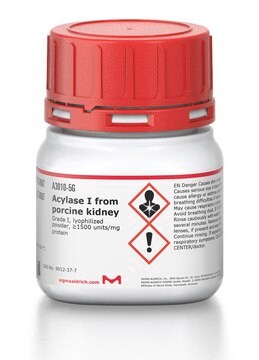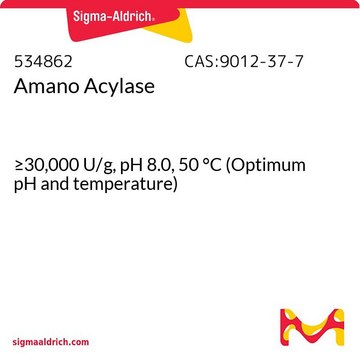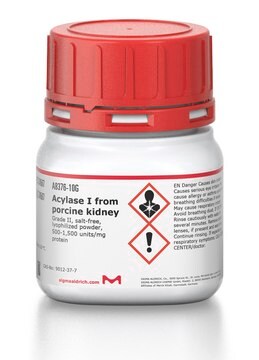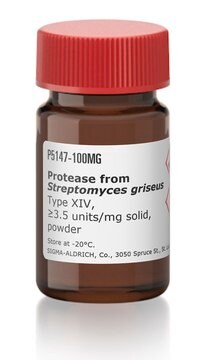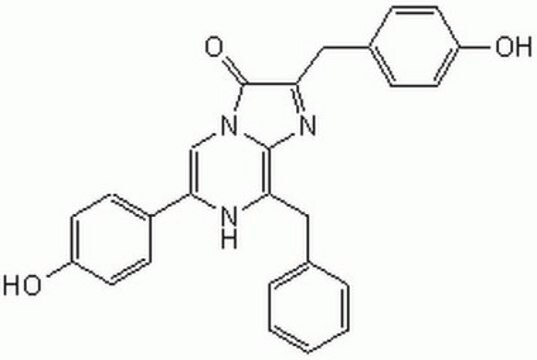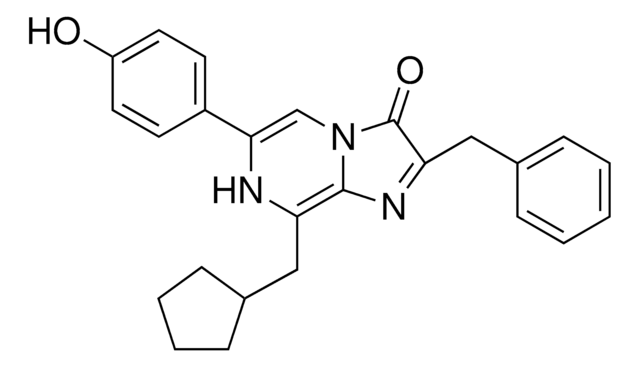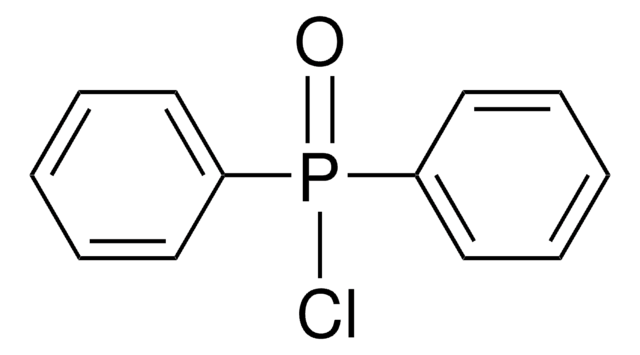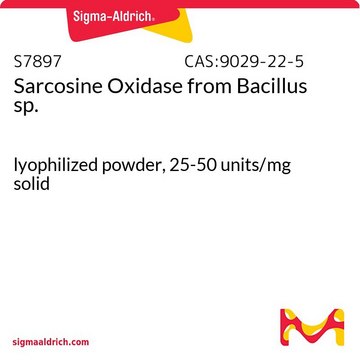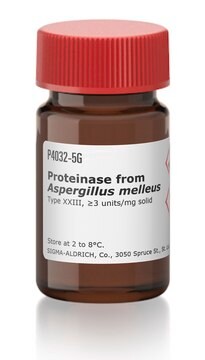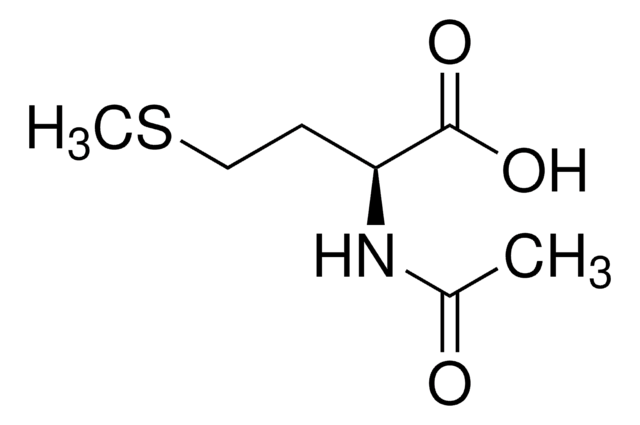01818
Acylase I from Aspergillus melleus
powder, brown, >0.5 U/mg
Synonym(s):
Acylase ‘Amano’, Aminoacylase
Sign Into View Organizational & Contract Pricing
All Photos(1)
About This Item
Recommended Products
General description
Acylase I belongs to the aminoacylase family of enzymes.
Application
Acylase I from Aspergillus melleus has been used to catalyze the Mannich reaction.
Biochem/physiol Actions
Acylase I plays an important role in the amino acid metabolism of organisms. It also plays a role in the acylation of primary and secondary alcohols. Acylase I is involved in alcoholysis.
Unit Definition
1 U corresponds to the amount of enzyme which hydrolyzes 1 μmol N-acetyl-L-methionine per minute at pH 8.0 and 37°C
Analysis Note
Enzyme activity: the optimum temperature is 40-45°C, the optimum pH is 8.0 (stable form pH 6-10). The enzyme is activated by CoCl2 in the range of 10-4 to 10-3 M.
Other Notes
Resolution of acetyl amino acids
Signal Word
Danger
Hazard Statements
Precautionary Statements
Hazard Classifications
Eye Irrit. 2 - Resp. Sens. 1 - Skin Irrit. 2 - STOT SE 3
Target Organs
Respiratory system
Storage Class Code
11 - Combustible Solids
WGK
WGK 1
Flash Point(F)
Not applicable
Flash Point(C)
Not applicable
Personal Protective Equipment
dust mask type N95 (US), Eyeshields, Gloves
Certificates of Analysis (COA)
Search for Certificates of Analysis (COA) by entering the products Lot/Batch Number. Lot and Batch Numbers can be found on a product’s label following the words ‘Lot’ or ‘Batch’.
Already Own This Product?
Find documentation for the products that you have recently purchased in the Document Library.
Customers Also Viewed
K. Uchida et al.
Journal of Labelled Compounds & Radiopharmaceuticals, 29, 867-867 (1991)
Keya Cai et al.
Sheng wu gong cheng xue bao = Chinese journal of biotechnology, 24(2), 285-290 (2008-05-10)
Three model silkworms, highly resistant strain, highly susceptible strain and their near isogenic line were established by hybridization and backcross. The resistance of silkworm (Bombyx mori L.) to BmNPV was studied at proteomic level using two-dimensional gel electrophoresis and MALDI
Xiaoyong Liu et al.
Journal of invertebrate pathology, 105(1), 84-90 (2010-05-18)
Silkworm hemolymph is an important defense tissue to resist bacteria and virus infections. To study the response of silkworm hemolymph in the resistance of Bombyx mori L. nucleopolyhedrovirus (BmNPV), we constructed a near-isogenic silkworm line with BmNPV resistance using highly
Albert P Chen et al.
NMR in biomedicine, 24(5), 514-520 (2011-06-16)
Reporter-based cell detection and localization in vivo may become an important imaging tool with the emergence of cellular therapy. With the strong signal enhancement provided by dynamic nuclear polarization, an NMR-based reporter probe system utilizing specific enzyme expression and activity
Le Hoang Lam et al.
Talanta, 79(4), 1130-1134 (2009-07-21)
Assay of angiotensin I-converting enzyme (ACE) inhibitory activity always draws much attention because of diverse applications in the field of antihypertension and related pathogenesis. Recently, the use of a new synthetic substrate, 3-hydroxybutyrylglycyl-glycyl-glycine (3HB-GGG), for the assay of ACE inhibitory
Our team of scientists has experience in all areas of research including Life Science, Material Science, Chemical Synthesis, Chromatography, Analytical and many others.
Contact Technical Service